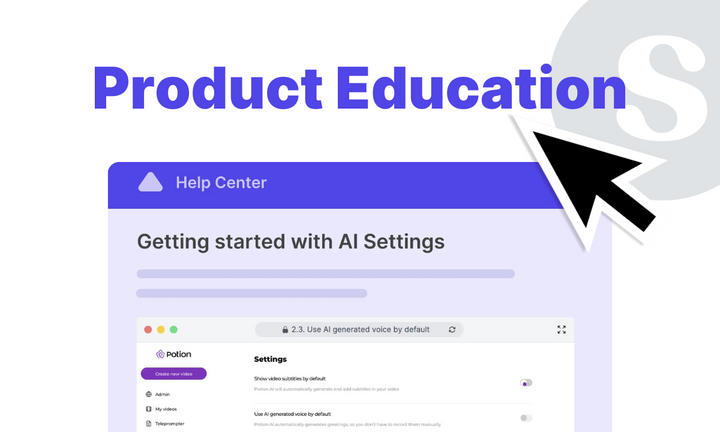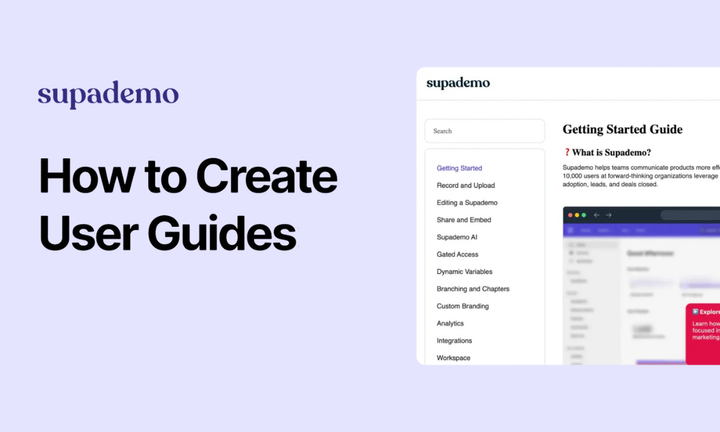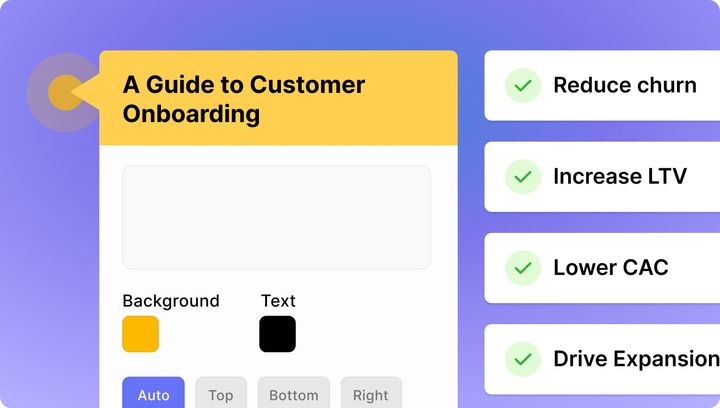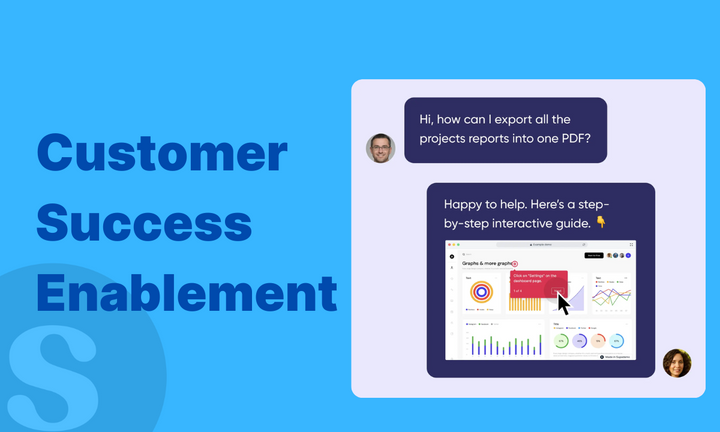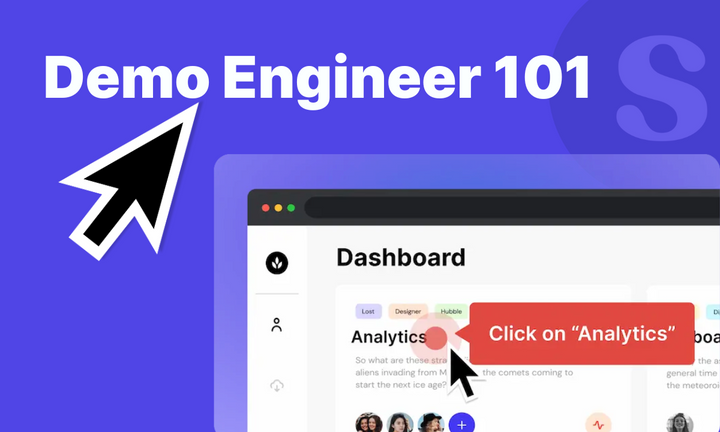If you think product education starts once users log into your apps, you're leaving money on the table.
Product education isn't just about helping existing customers; it begins the moment someone encounters your brand. Without thoughtful education integrated into every step—from initial discovery to long-term use—even self-serve tools can overwhelm potential users and drift them towards competitors.
In this guide, we'll unpack exactly why product education deserves your attention and share effective methods to teach users, build their confidence early on, and make them fall in love with your product.
What is product education?
Product education is about educating new, existing, and potential users on how to use your product to achieve their goals. It aims to help them get to the aha moment they had in mind when they signed up.

A carefully drafted product education strategy bridges what users might know and what they should know to champion your product.
Who owns product education?
Product education is a collaborative effort that spans multiple teams, each owning a different slice of the user journey.
Here’s a quick rundown of how different teams can contribute:
- Marketing team: They're involved even before a buyer becomes a user. Think blog posts, launch emails, explainer videos, and any type of content that helps potential buyers learn about your product and the problems it solves.
- Product team: This team know the product best, so they often own the in-app experience. From designing tooltips to guided checklists, they make sure users are adopting the features and staying engaged.
- Sales team: The sales team is responsible for interacting human-to-human through demos, pitches, and follow-ups. They play a secondary role by analysing customer calls and surfacing key concerns for optimization.
- Customer success team: This team is focused on ensuring a smooth onboarding experience and guiding new users in the right direction. They also conduct training calls and troubleshoot issues.
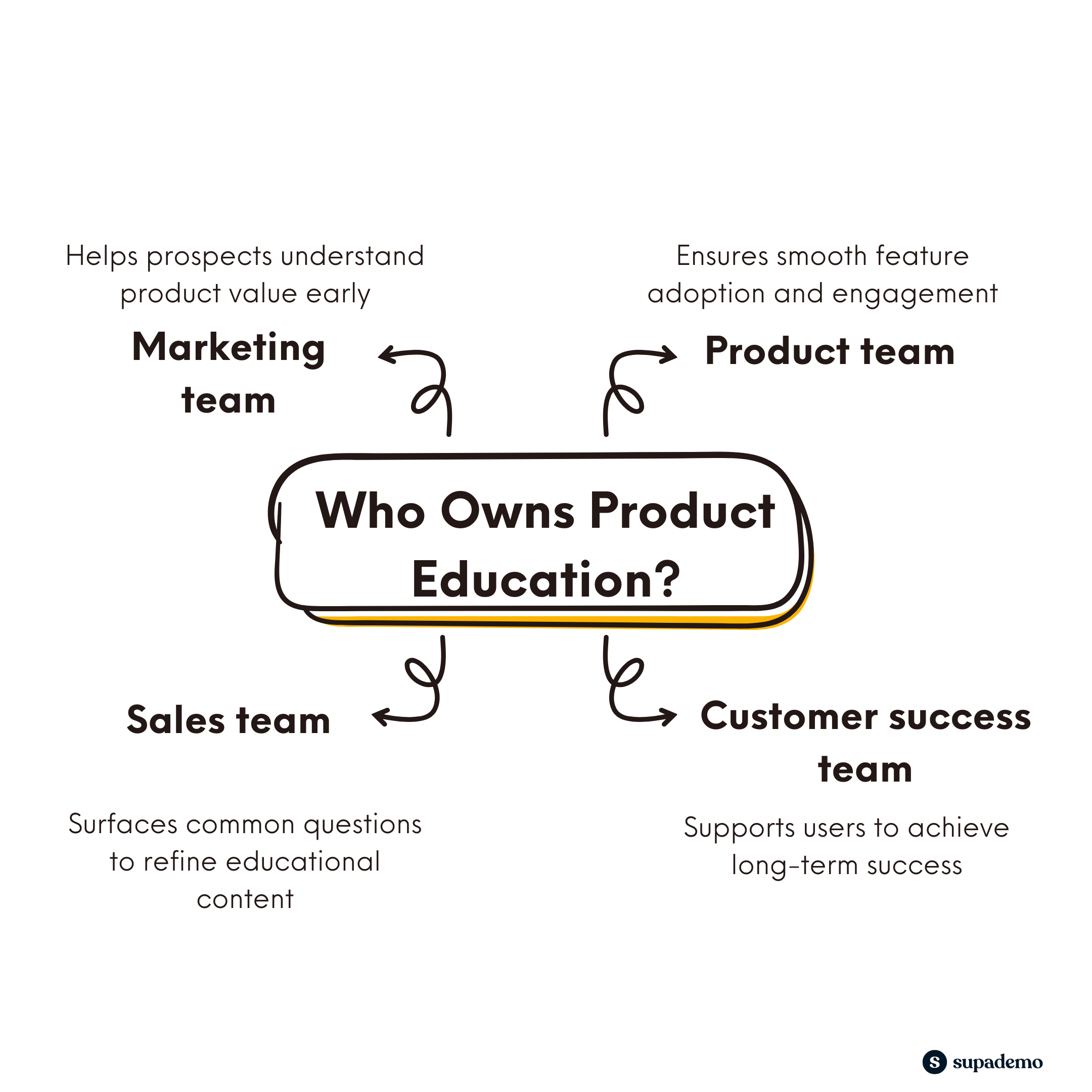
What are the benefits of product education?
From creating demand to building long-term loyalty, a thoughtful product education plan offers many benefits.
Reduce time to value
When users understand how to use key features from day one, they hit "aha moments" faster. This closes the gap between what your product promises and what users actually experience—a critical step in reducing early churn.
Increase feature adoption
Even your most engaged users may be missing out on features that could improve their workflow. Through contextual education, you can resurface such features, improving not only new feature discovery but helping them adopt them.
Improves customer retention
Churn often stems from confusion and dissatisfaction. If users struggle to get value or can’t find help when needed, they’ll walk away.
Product education provides 24/7 support through guides, walkthroughs, and contextual help, giving them all-time access to resources to never feel stuck.
Generate more sales
Educated buyers make faster decisions. By providing resources early in the journey, you empower prospects to self-qualify and convert, often without any sales team intervention. Research shows that such buying is preferred by 33% of buyers and 44% among millennials, helping you shorten the sales cycle.
What are the challenges in product education?
Creating product education material for customers comes with certain challenges due to the involvement of multiple stakeholders, non-linear buying journey, and product complexities.
Here are the three most common challenges that you run into.
Keeping pace with product updates
Keeping product education assets in sync with product releases is a constant operational hurdle. As you launch new features or updates, education resources like tutorials, help docs, and onboarding flows become outdated fast. When users encounter old screenshots or instructions that no longer match the UI, it erodes trust and increases support tickets.
Catering to multiple stakeholders
One of the common challenges is to create modular, role-specific content at scale that caters to different personas, from admins to decision-makers. Thus, a blanket tutorial or webinar for all might result in confusion or lack of engagement from at least one group.
Keeping up with customer's expectations
Product education often centres on new user onboarding—like welcome emails, product tours, and setup guides—while other key stages, such as awareness, activation, and retention, are overlooked. This gap can lead to missed conversion opportunities and lower customer lifetime value.
To help you deal with these challenges, we'll discuss how to tailor product education to your customer's journey and which format will drive maximum impact.
Where does product education fit in the customer's lifecycle?
Product education isn’t a one-time activity; it’s an ongoing process that supports users at every critical step in their journey, from first discovery to becoming loyal power users.
Here’s how education plays a vital role across the customer lifecycle:
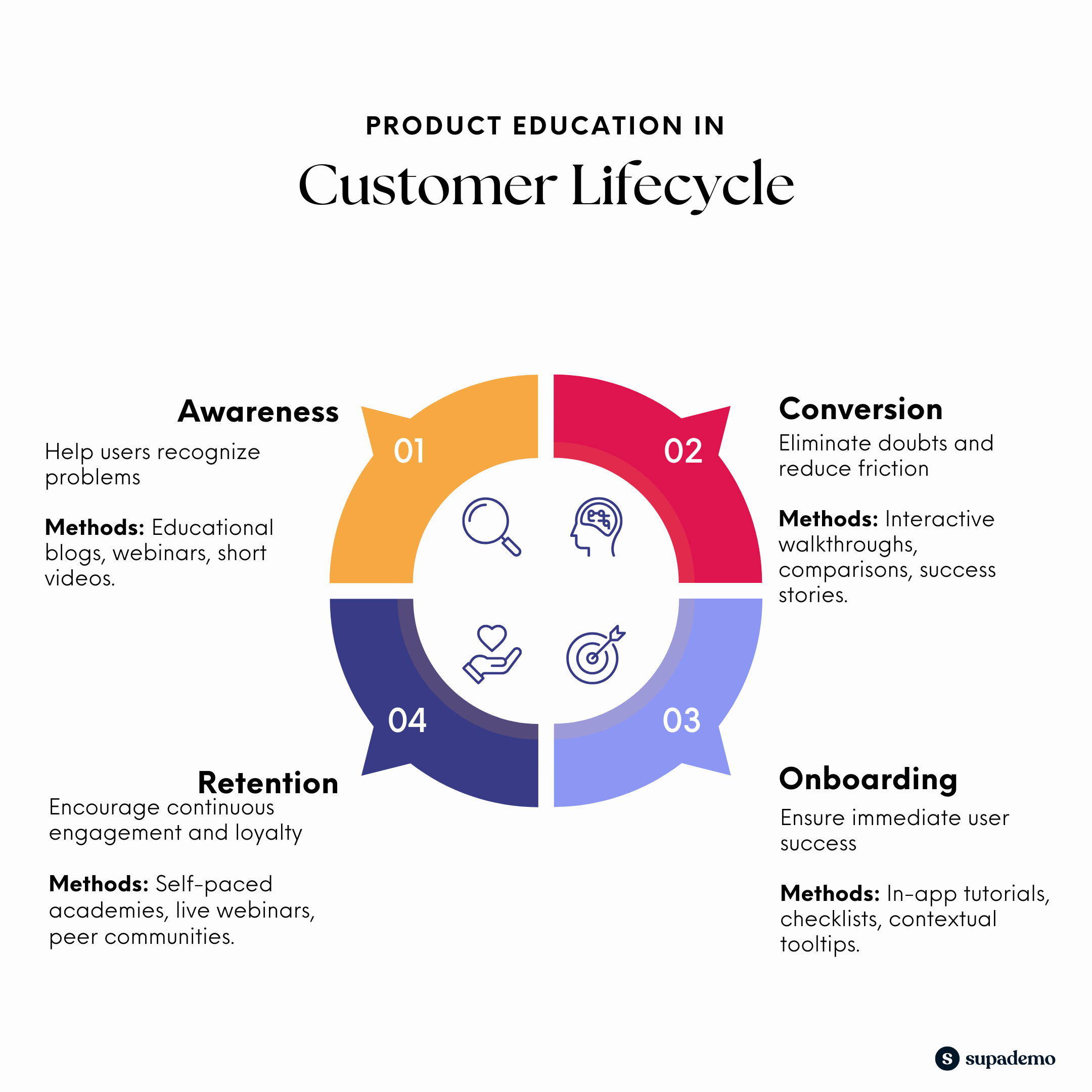
Awareness stage
At the awareness stage, potential users are beginning to recognize a problem or realize there might be better alternatives to solve the problem.
Product education is a guide at this stage, not helping users understand their problem better and introducing your product as a relevant solution.
Product-led blog posts, webinars, and short educational videos shared on relevant channels are some educational formats that will best serve users at this stage.
Conversion stage
As users move closer to buying, product education becomes a conversion lever. The focus now shifts from raising awareness to eliminating doubt, reducing friction, and helping users envision success with your product.
To handle customer objections and make them confident in their decision, use feature-specific interactive walkthroughs, product comparison guides, and customer success stories that highlight the real outcomes.
Customer onboarding stage
A good customer onboarding experience decides between a happy vs. churned user.
Through in-app tutorials, contextual tooltips, onboarding checklists, and personalized email courses, you are your best friend to teach users about different features and train them to get the most out of your product.
Retention stage
To retain customers and build long-term loyalty, you must help users mature: show them new features, introduce best practices, and address their feedback.
The focus is on keeping them engaged and showing how your product is becoming better in making the user's life easier.
Self-paced learning academies, live training webinars, in-app help resources and peer-based communities are effective in promoting continuous learning and building long-term loyalty.
Integrating product education throughout the customer lifecycle helps you maintain momentum, encourage feature adoption and keep your users happy.
How to train customers: 8 product education methods to use
Here are some of the tested and tried methods to educate customers and turn them into your product's advocate.
1. Interactive product walkthroughs
Interactive product demos guide users through your product's interface—clicking, hovering, typing—creating an active, hands-on learning experience.
Instead of passively watching or reading, users do the tasks themself, leading to higher confidence and information retention.
And the best part is you can educate different types of users by creating personalized walkthroughs. For example, you can build an interactive demo onboarding kit for new users or share a use case-specific educational demo for buyers in the consideration stage.
According to our State of Interactive Demos 2026 report:
- Impact rises from 70% to 75% once interactive demos cover three or more customer journey stages
- Teams using interactive demos across all five stages report 91% impact
Interactive walkthroughs perform best when they support users beyond onboarding, across consideration, activation, and ongoing education.
With Supademo, creating such demos at scale is even easier. You can screen record your product’s interface and customize it using the no-code demo editor. To make the demo look more real, edit the data points using the HTML editing feature.
- Embed on feature landing pages
- Embed in help guides
- Trigger in-app using Supademo
2. Knowledge base articles
A knowledge base is a self-service educational hub that contains published documentation related to your product. It helps users find answers to their product-related queries, troubleshoot common issues, or learn how a specific feature works.
It's an effective method as 91% of users are inclined to use a knowledge base if it is available and tailored to their needs.
You can house different types of documentation within your knowledge base:
- FAQs and answers
- Step-by-step process guides
- Introductory articles
- Video demonstrations
- Glossaries and definition lists
For example, Supademo’s knowledge base is categorized into feature-specific pages with a clear search function to help users find relevant resources.
- Create a dedicated knowledge base/Help centre page on your website
- Add in-app as a help widget, like this one 👇🏼
3. Video tutorials
Videos are another scalable educational format to show users how a certain feature works. One of the biggest advantages of videos is their versatility across the customer journey. Whether you want to answer support queries or demonstrate specific workflow during user onboarding, videos handle them effortlessly.
Unlike other formats, videos also add a human touch to the educational experience. It’s one thing to read about how a feature works, it’s another to see someone from your team (or a partner) walk users through the steps and explain the context behind it.
Zapier's onboarding video features a real team member walking new users through how to set up their first "Zap." It's a simple task, but the video makes it feel approachable, achievable, and a little fun.
There are different video formats you can use for product education:
- Feature explainers (What a feature does and why it matters)
- Product demos (End-to-end walkthroughs)
- Customer stories (Peer-led credibility and education)
- Troubleshooting clips (Quick fixes for common issues)
- Share how-to videos on YouTube and embed them on the relevant channels
- Offers a video walkthrough along with text-based guide in your knowledge base
- Embed videos in-app during onboarding or new feature launch annoucement
You can turn videos into clickable walkthroughs.
4. Webinars
Product-led webinars such as QnA are a low-key but effective method to engage potential buyers and users in a two-way learning environment (without any strings attached).
Webinars are among the cost-effective methods as you can educate not 10 but even 100 people simultaneously (without the cost of 1:1 onboarding).
For example, Dock’s CEO, Alex Kracov and Content Lead, Eric Doty, hosted a “Getting Started with Dock” webinar, addressing 100+ user questions live giving a no-BS look into Dock to its audience of prospective buyers.
One underlying benefit of running live webinars is they can offer a goldmine of genuine first-party data in the form of questions, concerns, and issues. You can use this data to identify gaps in your product education plan and develop more relevant resources.
- Use webinar platforms like Zoom, Sequel to host live webinars and publish replays on your website
- Repurpose webinars into short clips and embed them in onboarding emails or product-led blog posts
5. Contextual tooltips
Contextual tooltips offer "just-in-time" education, guiding users in-app without interrupting their workflow. These often appear as ⓘ icons and display a short text when a user clicks or hovers over them.
Rather than overwhelming users, tooltips focus on providing enough information to keep them informed and pique user interest.
For example, Trello, a project management tool, shows a brief message about its automation feature when clicked on the tooltip. It's subtle but offers the required information with an action button.
- If your product is icon-heavy (e.g., a video editing tool or website builder), place them next to important icons
- Set up trigger-based tooltips for in-time contextual nudge using a digital adoption platform like Pendo
6. Product-led blog posts
The list would be incomplete without mentioning the blog posts which are the go-to format. Blog posts are one of the most flexible, scalable ways to teach users, whether they're just discovering your product or trying to master a specific feature.
A well-defined blog strategy can:
- Show users in the awareness stage how your product solves a problem
- Explain how your solution stacks up against alternatives
- Educate about new product updates and feature launches
Zapier nails this approach. Their product-led blog and use case library don’t just market the tool, they teach users how to get real work done with it.
- Create a separate category for product-specific blog posts for ease of access
- Repurpose blog posts to share in your onboarding or email nurturing sequences
- Share as a reference guide in support replies or community threads
7. Communities
Communities create a peer-to-peer learning ecosystem where users educate and empower each other. With an active and managed forum or community, you can turn product education into an ongoing effort where every user is helping others to get the most out of your product.
From SaaS giants like HubSpot to startups like Clay, many SaaS businesses have already tapped into building a private community to empower their users and reduce support burden.
Use Slack or Discord to create an invite-based community and actively encourage users to share tips, best practices, or their concerns
8. Courses
Package your product’s tutorials, walkthroughs, and best practices in a structured learning pathway. Learners can explore lessons at their own pace without racing against the clock.
For example, Supademo’s learning academy contains product lessons, best practices, and insider tips. And, our team has used interactive tutorials to build an end-to-end product-led training experience that showcases the product while educating users giving build it using our tool. So meta!
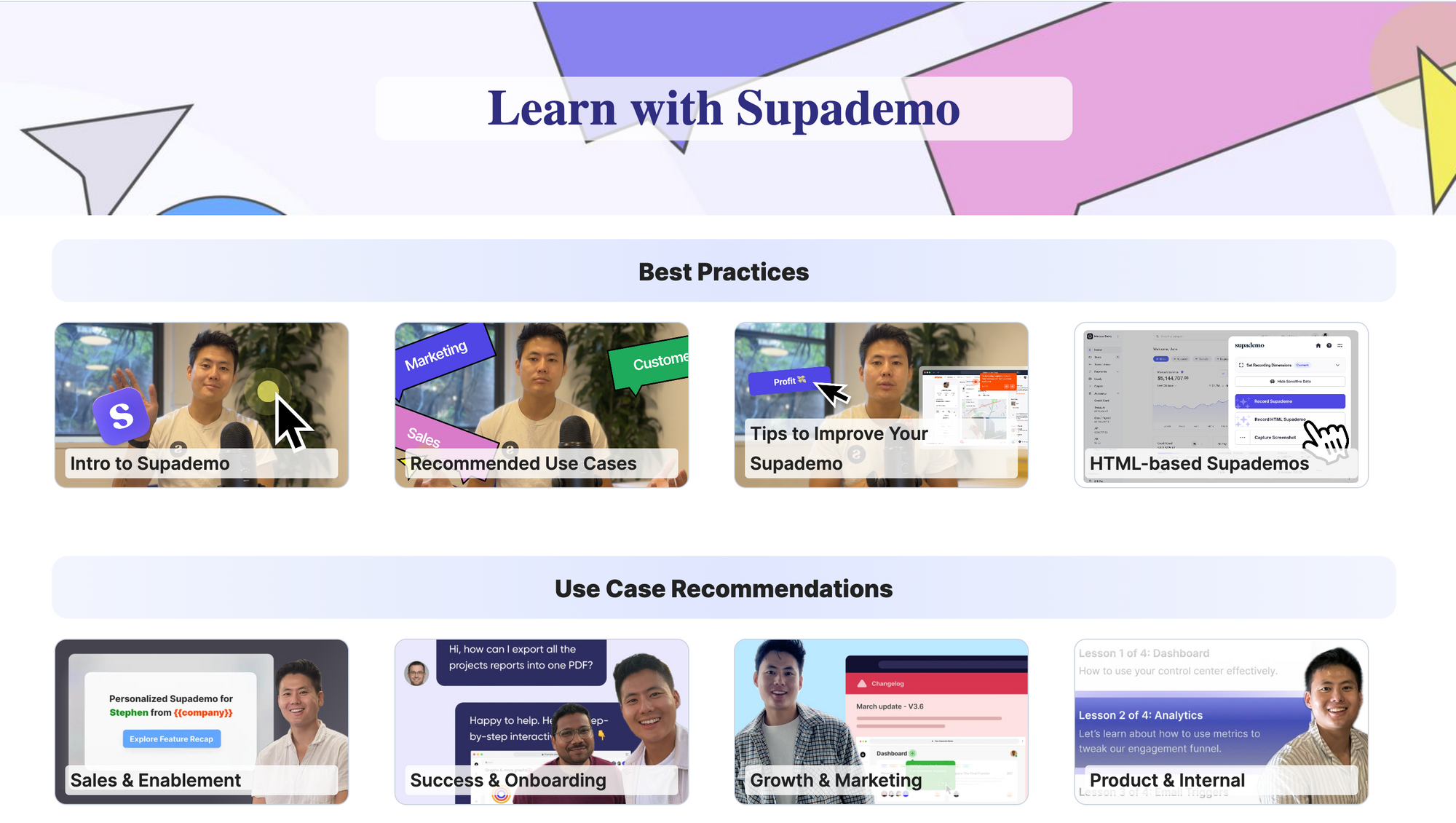
You can also offer these courses in bite-sized email lessons as part of customer onboarding or nurturing sequences. Clay, a GTM tool for B2B SaaS companies, does this 6-email series to educate new users about the different features of the tool.
- Use learning management platforms like Skilljar or Docebo to build a customer-facing education portal
- Set up email sequences to launch email-based courses using email marketing platforms like ActiveCampaign or Mailchimp
5 amazing product education tools to use
1. Supademo: For building an interactive product tour
Supademo is an easy-to-use demo-building platform that helps you educate your users by offering a hands-on interactive learning environment. It helps you train users about your tool, offer self-serve support, and onboard new users.
Key features
- Demo recording: Record your product interface using Chrome Extension, Macos/windows app, upload images/videos, take screenshots, or via HTML recording.
- Demo personalization: Customize each demo for different user segments using dynamic variables or conditional branching
- In-app tours: Trigger your product walkthrough within your app to offer 24/7 contextual guidance
- Supademo AI: Translate interactive product tours into 15+ languages, add voiceovers, or generate annotated texts.
One of the best features is creating a structured library of interactive demos using the showcase feature. It allows you to consolidate individual demos, organize them into dedicated sections, and build an educational kit, such as this one. 👇🏼
2. Skilljar: For creating customer learning academies
Skilljar is a learning management system that helps you build customer education and training programs—lessons, certification courses, micro-lessons—with embedded gamification such as quizzes and assessments.
Key features
- Customization: Add filters to improve the search quest and make every lament on-brand using its low-code editor
- Personalization: Tailor learning courses based on the individual’s learning need and show only the most relevant courses
- Learning paths: Group multiple courses into a single path for simplified access
- Analytics: Track and analyze how users are interacting with education material through visual charts and reports
3. Pendo: For in-app user behaviour tracking
Pendo is a leading digital adoption platform that helps you build in-app guidance and monitor how your users are engaging with them. It helps you build and embed UI elements like hotspots, pop-ups, interactive walkthroughs, checklists, and surveys.
- Product analytics: Monitor, record, and analyze user interactions with your app’s features and engagement with in-app resources
- Session replays: Analyze user behaviour through recorded session replacements to understand what steps users took, in what sequence, and why.
- Cross-channel journeys: Automate and trigger messages where your users are more receptive to seeing and engaging with them.
4. Sequel: For hosting live webinars
Sequel is a webinar hosting platform that helps you own the entire process on your own website—from registration to sharing replays.
Key features:
- Customization: Customize the stage with light or dark modes, fonts, colours, theme and background images to host an on-brand webinar
- Chat, Polls, and QnA: Engage viewers by offering interactive elements to collect questions or gauge their interest
- Live translation: Translate the webinar caption in real-time 10 languages per session using AI
5. Zendesk: For creating a knowledge base
Zendesk is a comprehensive customer service platform that offers Zendesk Guide, a purpose-built tool to create a customer-facing knowledge base.
Key features:
- No-code editor: Rich text editor that helps you write, edit, and publish with support for custom themes
- Content blocks: Save repeatable content pieces to use them across help articles
- Content cues: AI-powered feature that helps you identify gaps in your existing knowledge base and suggest improvements
- Multi-language support and localization: Zendesk supports 40+ languages and each page gets auto-translated to the viewer’s geo location.
How to measure the effectiveness of product education strategy
To understand if your product education efforts are truly working, look beyond surface-level engagement and ask pressing questions that reveal the impact and expose any gaps.
Start by asking:
- Are users completing the guided onboarding flows and reaching their first "aha" moment?
- Are support tickets—especially around basic tasks—decreasing over time?
- Which educational content (videos, tutorials, help docs) gets the most views and completions?
- Are the features we’ve highlighted being used more frequently?
- Are educated users converting from trial to paid faster?
- Does customer feedback show that users feel more confident or self-sufficient?
To support these questions, track key metrics such as:
- Time-to-First-Value (TTFV): It shows the rate at which users experience your product's core values
- Onboarding completion rate: It shows the percentage of users completing in-app onboarding flows
- Feature adoption rate: This metric reveals how frequently and how soon users start using key features
- Tutorial or doc engagement: These metrics track the number of views, average read time, and overall engagement with content across your blog, help centre, etc.
- Trial-to-paid conversion rate: It shows the percentage of freemium users who are likely to upgrade
That’s why it’s equally important to match your tracking tools to your education methods. For instance:
- Google Analytics is best for measuring engagement with blog posts, help docs, and other forms of content on your website.
- Product analytics tools like Pendo, Mixpanel, or Heap can track in-app tutorial usage, feature adoption, and onboarding progression.
- In-app guidance platforms like Appcues or Userpilot provide granular insights on tooltip engagement, walkthrough completions, and user behaviour flows.
When you spot any gaps or misalignment (e.g., high engagement but low adoption), that’s your cue to rethink the content, delivery, or depth of your product education strategy.
Wrapping Up!
Product education is a surefire way to boost buyers' confidence, accelerate time-to-value, and drive long-term user retention.
While choosing the right format may feel overwhelming, it ultimately comes down to understanding your user journey and identifying where guidance is needed most.
If your goal is to support users from the moment they discover your product, interactive demos are a smart place to start.
With Supademo, creating interactive product demos is fast and intuitive with no coding required. You can record once and repurpose the same demo across multiple channels—embed it in your help centre, add it to onboarding emails, or even share it as a GIF to support customers. Build your first demo →


